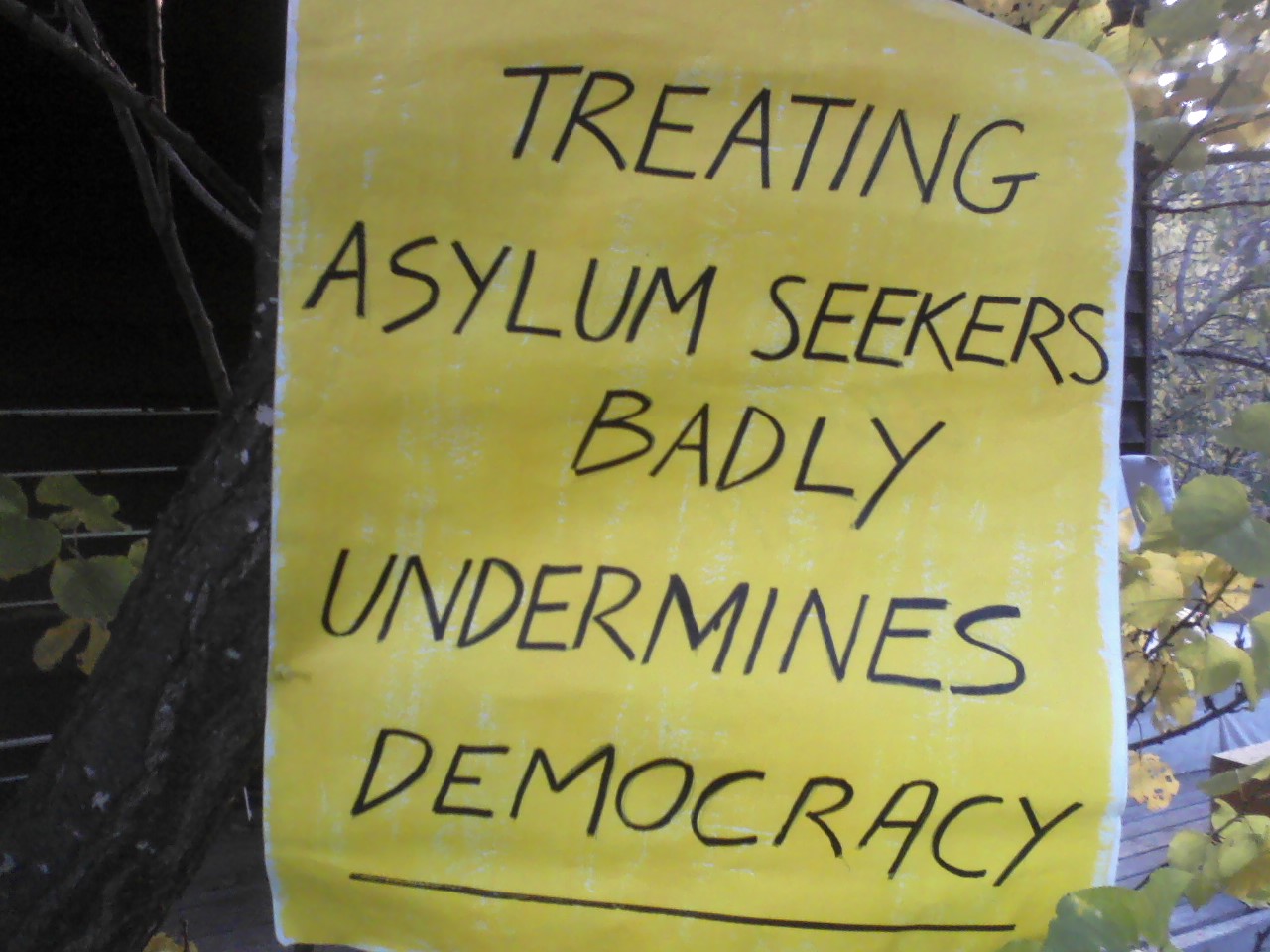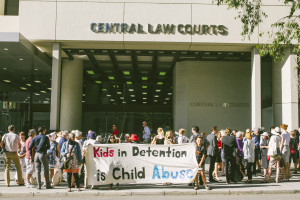Australia Deporting Nauru Island Refugees: A Scramble for Its Crumbling Reputation?
 Mistreatment of asylum seekers is causing uprisings amongst Australians who question their country's democracy. https://flic.kr/p/nkVfSB
Mistreatment of asylum seekers is causing uprisings amongst Australians who question their country's democracy. https://flic.kr/p/nkVfSB
As a client state of Australia, Nauru Island has forever been dependent on the aid and resources from the Australian government in support of its temporary settlement of refugees. These resources have included detention centres and infrastructure for refugee camps, as well as the implementation of adequate health and security resources for those claiming asylum in Nauru. However, since August Australia’s reputation as a country with a welcoming immigration policy is quickly imploding. The government’s ignorance towards the violent and systemic abusive behaviour of state officials towards asylum seekers has been revealed in over 2000 recently leaked files of child abuse, rape, and targeted violence from Australian officials towards Nauru Island refugees since 2013.
In the weeks following the release of the files, the Australian government has responded by banning all entry into Australia to those who are either temporary or permanent citizens of Nauru island. This leaves refugees who had hoped to make their way to a permanent home in Australia without a destination in sight. Although Australia is now looking to the United States as a third country to deport refugees after Cambodia and Papua New Guinea, it has yet to release any process details or dates regarding the implementation of this resolution.
Nonetheless, Australia continues its $55 million deal with Cambodia while promoting it in the press as a solution to these exposed files and an alternative destination for refugees. However, Australia’s deal with Cambodia has failed miserably since it was signed in 2014. Not only has Australia spent $15 million on deporting five refugees over the span of two years, much of which was extracted from budget cuts to Australian healthcare and education, but out of five refugees four chose to return to their country from which they fled from, instead of staying in Cambodia. Thus, Cambodia has only served to help one refugee resettle since 2014.
The Australian government’s response to the frightening exposure of abusive treatment on Nauru island suggests that the country is not in search of a real solution to the problem but is more concerned with its international reputation.
The actions taken by Australia shows its desperate desire to make this issue disappear in the press and preserve what is left of its international reputation of good-will. The country has decided to ban the further entry of refugees and Nauru citizens. Moreover, it continues to dispose of millions of dollars in deportation deals with Cambodia without any substantive thought process into the sustainability of its actions, let alone accommodations for asylum seekers in Cambodia and Papua New Guinea. In short, Australia is outwardly tossing out funds so as to appear as if it is working on a solution. However, in reality, it is merely relinquishing its responsibility to asylum seekers by sending them to corrupt accommodations where they are denied access to education and employment opportunities, while ultimately encouraging them to return to the countries from which they fled. By taking this route of deportation, Australia strategically escapes accusations of forcefully deporting refugees back to their country of origin. Instead, they are sending them to other countries of crisis such as Cambodia which is home to hundreds of thousands of its own refugees, and Papua New Guinea where according to the UN, over 90% of women experience sexual violence on public transport alone. Australia is indirectly encouraging refugees to make the choice to return to their country of origin on their own.
If deported refugees from Nauru Island are rejecting alternative host countries, accommodations must be intolerable. The files leaked from Nauru island detail conditions beyond belief.

The kind of abuse inflicted on Nauru Island refugees is distinct not only in its targeted cruelty, but also in the years it had been going on without intervention from the Australian government. Although Wilson Security had originally informed the Australian Parliament of its “robust policies and procedures,” and how, “allegations of sexual assault are treated in a timely and sensitive manner,” the files leaked to The Guardian dated back to 2013 and had escalated in both numbers and intensity over the next few years.
Although children only make up for 18% of those in detention, over 50% of the files leaked were reports of child abuse. Patterns of abusing primarily children reveal that the abuse is not randomly inflicted or sporadic. Instead, abuse is targeted towards the weakest demographic. Moreover, refugees are subject to extreme surveillance as their every move is controlled by Australian officials. This control goes so far as to forbid refugees to leave the grounds of their detention centres, besides the occasional day pass, keeping them imprisoned within the reach of their abusers.
This unveils a chilling parallel between a highly controlled surveillance system and power abuse from Australian officials. This relationship between controlling the daily movement of people and mass abuse draws more of a resemblance to torture chambers than detention camps. Furthermore, the abuse goes far beyond physical repercussions. Three years of targeting children and instilling paranoia among asylum seekers led to cases of insanity. One case in particular described a woman beating herself with a “glazed look,” as if she had begun to suffer from mental illness. Files range from bus drivers taking naked photos of women and masturbating to them, to a girl copying her mother by sewing her own mouth shut in efforts to resist sexual abuse from Australian officials. Another report included details of a young girl being escorted to take her shower with four Australian men inserting their fingers into her vagina.
Yet despite the nightmares of Nauru Island, those who were deported to Cambodia since the $55 million deal in 2014 have refused to reside there and have since returned to their country of origin. The failure of Cambodia’s ability to sustain accommodations for refugees comes to no surprise. The country has absolutely no experience in accommodating refugees and is host to hundreds of thousands of its own citizens in seek of refuge and human justice from state-led land dispossession. In the end, these poor living conditions lead them to make the decision to return to their country of origin.
Does Australia’s recent outreach to the US as a third country host give any hope to Nauru refugees? With the recent election of Donald Trump, the movement of a White America closing its borders to refugees is undoubtedly on the rise and causing Nauru refugees anxiety about the possibility of their deportation. Considering that most of these asylum seekers are from Afghanistan and Iraq, it is doubtful that they will not be subjected to the same degree of oppression and abuse from Americans compared to what they have experienced under the Australians. Even the assumption that the US will accept their requests for long term residency is a long shot.
Australia’s agenda to rid itself of Nauru refugees at any cost is becoming increasingly transparent. Deporting victims of targeted abuse to countries like Cambodia or Papua New Guinea that face similar crisis’ of their own, or to the US, a superpower which now leans towards mirroring Australia’s tendencies of refugee discrimination, will only increase refugee vulnerability and lay bare Australia’s exclusionary and discriminatory foreign policy to the rest of the world.
